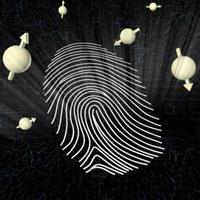What technological advantages can be achieved by directly harnessing the quantum-mechanical properties of physical systems? A particular example of a quantum advantage occurs in the field of quantum fingerprinting: quantum mechanics permits an exponential reduction in communication cost compared to the classical case. And yet, despite our advanced theoretical understanding of this quantum advantage, how to demonstrate it in experiment has been a central challenge.
In a recent paper published in Nature Communications , researchers from Professor Hoi-Kwong Lo’s (Department of Physics, University of Toronto) and from Professor Lütkenhaus’ (Institute of for Quantum Computing, University of Waterloo) group demonstrated a quantum fingerprinting system that is capable of transmitting less information than the best known classical protocol. They designed a new practical quantum fingerprinting protocol by using weak coherent pulses and cleverly built up a system, with commercial off-the-shelf fiber-optical components.
They implemented the protocol for input sizes of up to 100 Mbits and showed
that the information transmitted in the quantum fingerprinting protocol was up
to 66% lower than the best known classical protocol. Their results constitute a
significant first step in the development of experimental quantum communication
complexity, which may also be extended to other quantum protocols with a proven
exponential advantage over the classical case.
Please see the following link for the full article:
http://www.nature.com/ncomms/2015/151030/ncomms9735/full/ncomms9735.html

